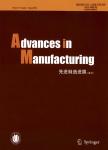Thermal error modeling based on BiLSTM deep learning for CNC machine tool
作者机构:School of Mechanical EngineeringShanghai Jiao Tong UniversityShanghai 200240People’s Republic of China
出 版 物:《Advances in Manufacturing》 (先进制造进展(英文版))
年 卷 期:2021年第9卷第2期
页 面:235-249页
核心收录:
学科分类:080503[工学-材料加工工程] 0817[工学-化学工程与技术] 08[工学] 081203[工学-计算机应用技术] 0807[工学-动力工程及工程热物理] 0805[工学-材料科学与工程(可授工学、理学学位)] 0802[工学-机械工程] 0835[工学-软件工程] 0811[工学-控制科学与工程] 0801[工学-力学(可授工学、理学学位)] 080201[工学-机械制造及其自动化] 0812[工学-计算机科学与技术(可授工学、理学学位)]
基 金:sponsored by the National Natural Science Foundation of Major Special Instruments(Grant No.51527806) the National Natural Science Foundation Projects of the People’s Republic of China(Grant No.51975372)
主 题:Thermal error Error modeling Bidirectional long short-term memory(BiLSTM) Phase space reconstruction Computer numerical control(CNC)machine tool
摘 要:The machining accuracy of computer numerical control machine tools has always been a focus of the manufacturing *** all errors,thermal error affects the machining accuracy *** of the significant impact of Industry 4.0 on machine tools,existing thermal error modeling methods have encountered unprecedented challenges in terms of model complexity and capability of dealing with a large number of time series data.A thermal error modeling method is proposed based on bidirectional long short-term memory(BiLSTM)deep learning,which has good learning ability and a strong capability to handle a large group of dynamic data.A four-layer model framework that includes BiLSTM,a feedforward neural network,and the max pooling is *** elaborately designed algorithm is proposed for better and faster model *** window length of the input sequence is selected based on the phase space reconstruction of the time *** model prediction accuracy and model robustness were verified experimentally by three validation tests in which thermal errors predicted by the proposed model were compensated for real workpiece *** average depth variation of the workpiece was reduced from approximately 50μm to less than 2μm after *** reduction in maximum depth variation was more than 85%.The proposed model was proved to be feasible and effective for improving machining accuracy significantly.



